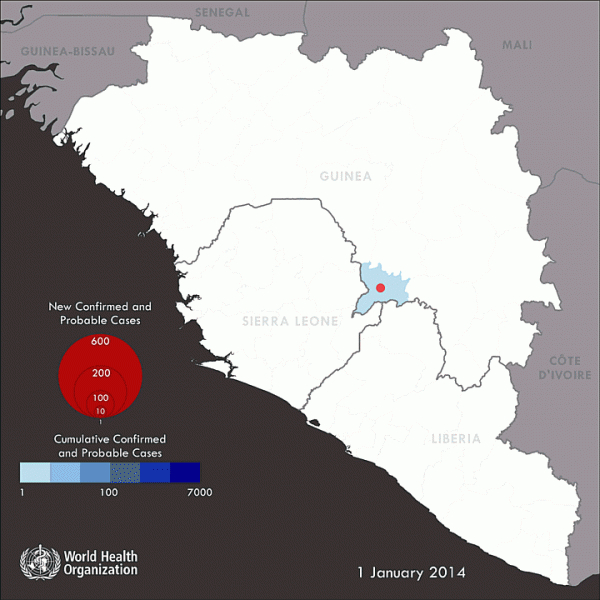You are here
How the outbreak and WHO's response unfolded
WHO's response to the Ebola virus disease outbreak in West Africa had 3 phases. Phase 1 focused on rapid scale-up of the response; phase 2 focused on increasing capacities, phase 3 focused on interrupting all remaining chains of Ebola transmission, and responding to the consequences of residual risks.

Phase 1: Rapid scale-up of the response
In Phase 1 (August – December 2014), WHO and its partners focused on rapid scale-up of the response. This included:
- Increasing the number of Ebola treatment centres and patient beds.
- Rapidly hiring and training teams in safe and dignified burials.
- Strengthening social mobilization capacities.
Work in these areas began in August 2014, as the outbreak exploded, and continued through the end of December. During this period, the UN Mission for Ebola Emergency Response (UNMEER) was launched.
Phase 2: Increase capacities
In January 2015, WHO and its partners moved into Phase 2 (January – July 2015). In this phase, emphasis was placed on:
- Increasing capacities for case finding.
- Increasing capacities for contact tracing.
- Community engagement.
Efforts in these areas, along with the beginning of an Ebola vaccine trial in Guinea, are credited with bringing the outbreak under control and driving case numbers and deaths from Ebola downward into the single digits.
WHO stresses that Guinea, Liberia and Sierra Leone remain at risk of additional flare-ups in the coming months as the virus gradually clears from the survivor population. Strong surveillance and response systems will be critical in the months to come.
Phase 3: Interrupt transmission of Ebola virus
WHO and its partners are now in Phase 3 (August 2015 to mid-year 2016) with the overarching goal to interrupt all remaining chains of Ebola transmission. To do this, several objectives have been outlined and WHO and its partners are working towards the following outcomes:
- Enhancing the rapid identification of all cases, deaths, and contacts.
- Establishing and maintaining safe triage and health facilities.
- Building multi-disciplinary rapid response teams at regional and zone levels in 3 countries.
- Providing incentives for individuals and communities to comply with public health measures.
- Engaging in chieftain-lead, community-owned local response activities.
- Improving Ebola survivor engagement and support.
- Ending human-to-human transmission of Ebola virus disease in the populations and communities of the affected countries.
To address these objectives, we need anthropologists, community engagement experts, social mobilizers, doctors and nurses, sanitation workers, and safe and dignified burial teams.



Comments
Ebola outbreak 2014: How the outbreak & WHO's response unfolded
Reference source for the article above . . .
who.int - January 2016
http://www.who.int/csr/disease/ebola/response/phases/en/